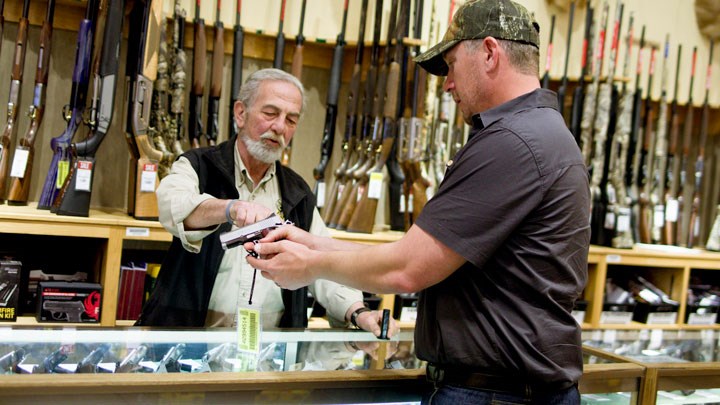
by Mark Chesnut - Monday, April 12, 2021

With the first three months of the year being another impressive quarter for firearms sales, many are asking when the ramped-up gun-buying trend might finally end. That question aside, hunters should be thanking their lucky stars that gun sales remain so brisk. After all, guns sales fund conservation.
According to the latest data from the National Shooting Sports Foundation (NSSF), more than 1.3 million background checks were conducted for the purchase of a firearm in February, a 7 percent jump from February 2019.
“February’s adjusted NICS [National Instant Criminal Background Check System] data shows us that Americans continue to purchase firearms in record numbers, while at the same time, their elected representatives in Washington, D.C., and the Biden administration plot to steal away their right to purchase firearms,” said Mark Oliva, director of public affairs for the NSSF.
While many of the guns sold over the past 12 record-breaking months were likely for range use and self-defense instead of hunting, the contributions these gun buyers—including millions of new ones—have made to conservation through the Pittman-Robertson (P-R) Federal Aid in Wildlife Restoration Act of 1937. Through the act, an excise tax was placed on firearms and ammunition at the manufacturer level, with archery equipment and firearms accessories added later. The manufacturers pass the tax along to America’s gun buyers, and resulting funds are allocated to the states for their wildlife conservation and habitat restoration projects. So as far back as 84 years ago, hunters were directly funding conservation. The P-R program is a boon to conservation and, thereby, hunting throughout the country.
Last year alone saw more than 21 million background checks conducted for the sale of a firearm, and some experts believe that more than a third of those checks were conducted for first-time gun owners. Imagine, people who have never owned a gun before—much less gone hunting—helping to pay the bills for state wildlife managers to do their jobs better and more effectively. As this NRA Hunters’ Leadership Forum website points out, the conservation of our renewable wildlife resources is a job for hunters and non-hunters alike.
Incidentally, it’s not just the sale of traditional hunting guns that results in those contributions to game and fish departments throughout the nation, nor are the numbers inconsequential. Consider an AR-style rifle—commonly called a modern sporting rifle (MSR)—or even a semi-auto handgun made for concealed carry purposes. Since tax revenues are based on the wholesale amount, let’s theoretically say that the average wholesale price for an MSR is about $600 and for a semi-auto pistol is about $400. If a million MSRs and five million semi-auto pistols are sold in a year—which isn’t an outlandish assumption—the revenue to the P-R fund would be about $260 million. That money is given to fish and game agencies based on the number of licensed hunters their states have.
Many hunters know the story about how this money was used to bring both game and non-game species back from the brink of extinction, including elk, wild turkey, pronghorn antelope and whitetail deer. Current projects using the money continue to benefit the populations of these species and many more.
It’s mind-boggling to consider how much money the gun sales corresponding to those 21 million background checks amounted to last year. That’s not even considering ammunition and other hunting gear included under the tax.
One thing’s for sure: As hunters, we should be thankful that Americans are continuing to buy firearms in record numbers. Not only are they practicing their Second Amendment right in the most basic way possible, but they’re contributing greatly to conservation of the wildlife species we are so fond of pursuing.
About the Author
Freelance writer and editor Mark Chesnut is the owner/editorial director at Red Setter Communications LLC. An avid hunter, shooter and field-trialer, he has been covering Second Amendment issues and politics on a near daily basis for the past 20 years.
E-mail your comments/questions about this site to:
[email protected]
